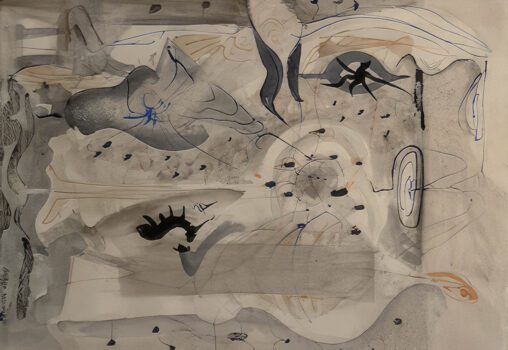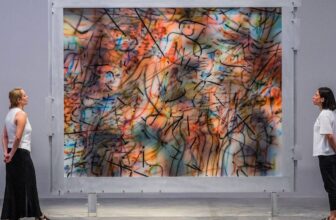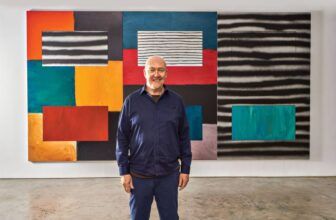What is So Special About Mark Rothko’s Paintings
On a sunny afternoon in the Museum of Modern Art, a woman stood in front of a vast canvas, just color, nothing else. A rich, weighty maroon floated against deep black. Her shoulders began to tremble. She sat down, overcome. This wasn’t a rare event. It happens more than curators can count. This was a Rothko.
Mark Rothko’s paintings do something that few others can. They bypass intellect and speak straight to the soul. But what exactly is it that makes his work so powerful, so expensive, so deeply moving? To understand Rothko is to step into a world where color replaces language, silence replaces explanation, and presence becomes the only thing that matters.
What is the Theory of Mark Rothko?
Mark Rothko was not a formalist. He resisted being categorized. He rejected labels like “abstract expressionist,” though he’s now grouped with that movement. His real interest was something ancient and ineffable, emotion, myth, and the human experience. Rothko believed art should address the “basic human emotions, tragedy, ecstasy, doom.” For him, painting was a spiritual act.
In the 1940s and ’50s, Rothko, like many modern artists, was searching for something beyond representation. He began by painting mythological scenes and figures but quickly realized that the stories themselves got in the way. So he stripped them away. By the early 1950s, he had developed the iconic “multiforms”: large, vertical canvases with soft-edged rectangles floating on luminous backgrounds.
But this wasn’t just about form. Rothko had a theory, he believed that color could be a vessel for deep emotional truths. In his words, “A painting is not about experience; it is experience.” He wasn’t painting pictures of emotions. He was painting emotions themselves.
At first glance, a Rothko can seem deceptively simple, just blocks of color. But stand in front of one, and you’ll understand. The colors pulse, shift, and shimmer. The edges of the rectangles are not sharp but bleed into the background. They appear to float, breathe, and vibrate with a life of their own.
This is what makes Rothko’s work so special. His paintings are not static. They change depending on your distance, your mood, the lighting, even your emotional state. A red that once seemed warm and comforting may, the next day, feel like blood or flame. A deep black can absorb you entirely.
Rothko intended for his works to be seen up close. He wanted viewers to feel enveloped, even swallowed, by his color fields. In this immersion lies the magic. It’s not about what the painting shows; it’s about what it does to you.
What Is the Meaning Behind Mark Rothko’s Paintings?
Though his works are non-representational, Rothko’s paintings are rich with meaning. His colors are not random; they are chosen with intense deliberation. A painting might feature glowing yellows over reds, evoking joy or awe. Another might be dark, heavy with browns and blacks, whispering sorrow or existential dread.
But Rothko never offered explanations. “Silence is so accurate,” he once said. He believed that to explain the painting would reduce its power. Instead, he created spaces for viewers to insert their own emotions and experiences. In this way, his art becomes a mirror, what you feel is what you see.
There is also a strong philosophical and even religious undertone in his work. Rothko was deeply influenced by Nietzsche, especially his idea of the tragic and the sublime. He was also fascinated by ancient myths and religious texts. Many critics view his paintings as modern altarpieces, evoking the same reverence and introspection one might feel in a cathedral.
What Is Mark Rothko’s Most Expensive Painting?
As of recent records, Rothko’s most expensive painting ever sold is “Orange, Red, Yellow” (1961). It sold at Christie’s in 2012 for $86.9 million, a staggering sum that reflects both his enduring influence and the ferocious demand for his rare works.
The painting is a brilliant tapestry of glowing colors: a radiant red sandwiched between vibrant orange and bright yellow. The piece is mesmerizing, almost burning with intensity. Its sale marked not just a financial milestone but a moment of recognition: Rothko wasn’t just a painter, he was a legend.
Why Is Mark Rothko’s Art So Expensive?
There are several reasons Rothko’s art commands such astronomical prices:
Rarity: Rothko produced a limited number of major works during his lifetime. After his tragic suicide in 1970, that number became finite. Unlike contemporary artists, he isn’t creating more. Scarcity drives value.
Emotional Impact: Rothko’s art is not just visually striking, it’s spiritually moving. Collectors are paying for an experience, not just a canvas.
Cultural Significance: Rothko is a foundational figure in American modern art. His work is seen as a pinnacle of 20th-century abstraction, making his paintings highly desirable to museums and collectors alike.
Provenance and Exhibition History: Many Rothko paintings have been exhibited in major retrospectives or are part of influential collections. Their history adds to their prestige and price.
Market Momentum: As demand increases and fewer works become available, prices continue to rise. Rothko is a blue-chip artist, considered a safe and prestigious investment.
What Is the Rothko Art Technique?
Rothko’s technique was as nuanced as his intentions. He didn’t simply paint blocks of color. He layered, thinned, and manipulated his pigments to create a glowing, almost translucent effect. He often used egg-based tempera, oil paint, and natural gesso, building thin washes of color that allowed light to pass through.
He applied his paint with rags, brushes, even his hands, anything to avoid hard edges and to give the paint a softness, a presence. He worked wet-on-wet, letting colors merge and bleed. The effect is atmospheric. The rectangles seem to hover in space, and the canvases almost breathe.
One of the most distinctive aspects of Rothko’s method was his use of scumbling, a technique where a thin, opaque layer of paint is brushed over another to create a sense of depth and luminosity. This gave his colors a glowing, inner life.
Why Did Rothko Paint So Big?
Size, for Rothko, was not about grandeur. It was about intimacy.
He once said, “I paint big to be intimate.” At first, this sounds paradoxical. But his goal was to engulf the viewer, to remove all distractions, to make the painting a complete environment.
He wanted people to stand close. He wanted them to feel like they were inside the painting, swallowed by the color, the feeling, the silence. A small painting invites observation; a large one demands presence.
By painting big, Rothko eliminated the distance between the art and the observer. It became not just something you looked at, but something you entered.
Why Do People Cry in Front of Rothko Paintings?
This question has been asked many times, even by museum staff who witness it regularly. Why do Rothko’s works provoke such deep emotion?
The answer lies in the purity of the experience. In a Rothko, there is no story, no characters, no scenery, just color, mood, and space. For many people, this stripping away of everything except emotion creates a powerful resonance.
His paintings have been compared to therapy, meditation, even prayer. They hold space for grief, joy, love, loneliness. The vastness of the canvas, the softness of the edges, the resonance of the colors, they all open a door to feelings long buried.
Rothko himself was no stranger to pain. His later works, particularly the Seagram Murals and the Rothko Chapel paintings, are suffused with darkness and melancholy. They seem to hold human sorrow, quietly and without judgment. For those facing personal pain or searching for meaning, Rothko’s works can feel like they are being seen, perhaps for the first time.
Rothko Chapel: The Emotional Apex
Nowhere is Rothko’s vision more fully realized than in the Rothko Chapel in Houston, Texas. Commissioned by the de Menil family and completed shortly before his death, the chapel is a spiritual, non-denominational space surrounded by fourteen of his paintings, vast, somber, near-black fields of color.
Visitors enter and sit in silence. Some weep. Some sit for hours. The space is both minimalist and profound. It doesn’t tell you what to feel; it simply allows you to feel. Rothko envisioned the chapel not as a gallery, but as a sanctuary, for all people, of all faiths, facing life’s largest questions.
It’s the culmination of Rothko’s lifelong quest: to make art that transcends.
Mark Rothko once said, “A painting is not a picture of an experience. It is an experience.” That sentence captures the essence of his work better than any analysis could.
Rothko gave us color as language, canvas as cathedral, silence as message. His paintings don’t explain, they invite. They meet you where you are, and they change depending on who you are.
In an age of noise, distraction, and spectacle, Rothko’s art stands as a quiet, commanding presence. It reminds us that feeling deeply is still possible. That color can speak. That in the emptiest moments, we might find something that feels a lot like grace.
So when someone cries before a Rothko, it’s not because they’re confused or overwhelmed. It’s because, in that glowing field of red or violet or black, they found something they didn’t know they’d lost, or something they thought only they had ever felt.
Rothko painted the invisible. And somehow, he made it unforgettable.




